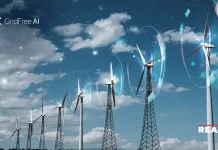Humans have done enough damage to the environment. That’s what research says. Human activity has completely altered about 16% of 95% of the land mass. Added to this is the massive pollution caused by vehicles. 1/5 of global CO₂ emissions are caused by cars worldwide. It is high time for a sustainable means of transportation. Low-powered electric motorcycle and scooter could be the answer. According to Extrapolate, the global low-powered electric motorcycle and scooter market is estimated to reach $6,384 million by 2030. This provides a blend of affordability, convenience, and performance. Let’s learn more.
What is a Low-Powered Electric Motorcycle and Scooter?
Low-power electric motorcycles or scooters are electric vehicles with two or three wheels designed for urban use, producing less power than conventional motorcycles or powerful electric motorcycles. These vehicles are characterized by their small size, easy handling, and mobility and are generally used for short-distance trips within cities.
Compared to higher-powered electric motorcycles, they are powered by rechargeable batteries and have a lower top speed and range. In cities, low-power electric scooters and motorcycles are often the more accessible and affordable choice for people looking for environmentally friendly mobility.
What Is The Benefit Of Low-Powered Electric Motorcycle and Scooter?
Low-powered electric motorcycles and scooters have several advantages that make them a popular choice for urban commuting and short-distance travel. Here are the key benefits:
- Environmentally Friendly: Electric motorcycles and scooters emit zero emissions while in operation, aiding in a cleaner environment compared to traditional gasoline-powered vehicles. They help reduce air pollution and reliance on fossil fuels, making them a more sustainable transportation option.
- Cost Savings: Electric vehicles generally have lower operating costs compared to gasoline-powered vehicles. With reduced maintenance and fuel expenses, low-powered electric motorcycles and scooters can offer long-term savings for owners. Furthermore, some cities provide incentives like tax credits or discounted parking fees for electric vehicle owners, enhancing their cost-effectiveness.
- Quiet Operation: Electric motorcycles and scooters run quietly, decreasing noise pollution in urban areas and providing a calmer riding experience. This can be particularly beneficial in navigating through traffic at slow speeds or when stopped.
- Ease of Use: Low-powered electric motorcycles and scooters are typically designed to be user-friendly, featuring features such as a twist-and-go operation that eliminates the need for gear changes. They are generally lightweight and simple to handle, making them suitable for riders of various proficiency levels, including beginners and those without a motorcycle license.
- Increased Mobility: Electric scooters offer enhanced mobility for individuals with health concerns or limited mobility. The lower speeds and easy driving and maneuvering capabilities make them accessible to a broader range of users, including younger riders who may not be permitted to have a driver’s license.
What Are The Disadvantages Of Electric Motorcycles?
- Shorter range: Electric motorcycles generally have a limited range compared to petrol-powered motorcycles. The range can vary depending on the model and battery capacity but can be a problem for riders planning long-distance trips.
- Longer charging time: Charging an electric motorcycle takes more time than refueling a gasoline-powered motorcycle. Although charging times can vary, it generally takes several hours to fully charge the battery. This can be inconvenient for riders who need to refuel quickly and continue their journey.
- Higher initial cost: Electric motorcycles generally have a higher initial cost than their gasoline-powered counterparts. The cost of the batteries and electric motor technology contributes to this higher price. However, it is worth noting that the cost of electric motorcycles is expected to fall as technology advances and economies of scale are achieved.
- Limited charging infrastructure: The availability of charging stations for electric motorcycles is still limited compared to charging stations for conventional motorcycles. This can make long-distance riding difficult, especially in areas with fewer charging stations.
- Battery life and replacement costs: The life of electric motorcycle batteries can vary, but at some point, they will degrade and need to be replaced. Battery replacement can be expensive, and the cost should be factored into the total cost of ownership of an electric motorcycle.
Is Low-Powered Electric Motorcycle and Scooter the Key to Curbing Pollution?
The growing popularity of electric bikes and scooters is no accident; it’s driven by the need for lower operating and maintenance expenses. As fuel costs continue to rise, consumers are naturally gravitating towards battery-powered electric motorcycles and scooters. Unlike internal combustion engines or diesel-powered two-wheelers, electric bikes and scooters have fewer moving parts, leading to significantly lower maintenance costs.
From my experience in the industry, I’ve seen how environmentally friendly regulations are playing a crucial role in this shift. Policies aimed at reducing pollution and decreasing reliance on fossil fuels are set to bolster market growth. Additionally, the increasing environmental awareness among consumers and government initiatives to cut CO2 emissions are key factors that will drive the growth of the low-powered electric motorcycle and scooter market in the coming years.
The push towards sustainability is not just a trend but a necessary evolution. As we continue to innovate and adapt, the benefits of electric mobility are becoming more apparent and indispensable. The transition to electric two-wheelers is not only beneficial for the environment but also offers a practical and economical solution for everyday commuting
Zooming Up
Looking ahead, the future of the low-powered electric motorcycle and scooter industry is incredibly promising. As technological advancements continue to improve battery efficiency and charging infrastructure, we can expect even greater adoption rates. Governments worldwide are likely to implement more stringent emissions regulations and offer further incentives for electric vehicle adoption, accelerating this transition.
Browse More Posts:-
Endoscopy Device Market May See a Big Move
Endoscopy Device Market to Witness Massive Growth
Endoscopy Device Market is Booming Worldwide
Endoscopy Device Market to See Huge Growth by 2030




